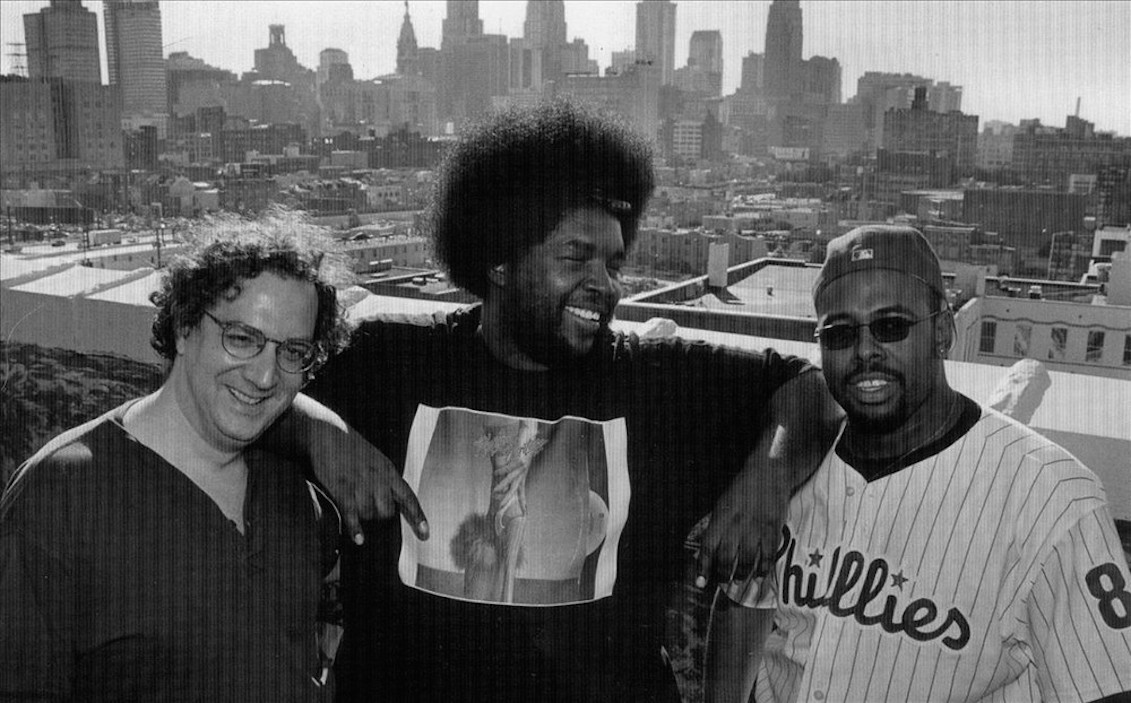
How ‘The Philadelphia Experiment’ still embodies the city’s energy
Twenty years ago last month, The Philadelphia Experiment released their first-and-only album. AL DÍA spoke with original band member Uri Caine to discuss the…
The Philadelphia Experiment was assembled with the intent to combine musicians working in different genres. Band members Uri Caine, Christian McBride, and Ahmir “Questlove” Thompson — all Philadelphia natives — recorded in Philly for only three days in September 2000, but what they produced was a record brimming with the city’s energy.
Originally released by Ropeadope Records on June 12, 2001, The Philadelphia Experiment was a collaborative studio album from the uniquely-formed trio.
Caine, a pianist, had been working in the classical genre. McBride, a bassist, came from jazz. Thompson — the drummer for The Roots, — was known for his hip-hop rhythm.
The three were approached about joining The Philadelphia Experiment, a new group meant to produce experimental and genre-bending instrumentals. The experiment referred to the grouping of these musicians in one studio.
Despite varying musical backgrounds, the process of recording the music was not all that different from other recording experiences, according to Caine.
“If you’re a musician… any type of artist who’s dealing with a lot of different information, then you put it together the way you want to. There’s really no limit. Doesn’t mean you don’t have to study,” he told AL DÍA.
After those three September days spent recording, the end product was The Philadelphia Experiment, a self-titled record filled with improvised moments, personalized covers, and original jam sessions.
Each member of the trio played their mastered instrument of choice, while guest stars, such as Philadelphia guitarist Pat Martino, popped in alongside cellist Larry Gold and trumpeter John Swana. The record was produced by Aaron Levinson.
Caine had known McBride from playing together prior to the band’s formation. McBride and Thompson, having known one another from high school, had also musically collaborated before The Philadelphia Experiment.
When asked if recording this album at all altered his perspective of the city, Caine said his perspective remained one he already knew well.
“I wouldn’t say [this album] gave me a new perspective [on Philadelphia], but reinforced one that I’ve had,” Caine said.
There is an undeniable appeal to the instrumental outing from the group. Clear in its inspirations, the project pairs well with the city it is named after.
Being instrumental, the record holds a narrative through covers, references, and tributes as opposed to lyrical storytelling.
While Philadelphia remained the driving thematic element throughout, the plan was also to create a project based on the trio’s unique backgrounds, according to producer Aaron Levinson.
“I always wanted to make a record that utilized guys that came from different fields,” Levinson said in a 2001 NPR interview.
While Levinson was seeking to assemble a group of musicians from different backgrounds as an experiment, Caine saw the experience of working with Jazz bassist McBride and hip-hop drummer Thompson as just another day as a musician.
“I’ve seen people describe that record as if it’s like this meeting of different worlds. To me, that seems forced. It’s sort of naive in a way. It’s not really how musicians deal. It’s what they love to hear and what they love to play,” said Uri Caine.
While the trio were of different genres, the blending of their respective backgrounds came as a natural process.
In addition to the Philadelphia-born trio, The Philadelphia Experiment also featured guest contributions from Philly musicians and tracks referencing the city in an act of paying homage.
The tracklist included covers such as ‘Philadelphia Freedom,’ an off-kilter take on the Elton John hit, originally written in honor of the Philadelphia Freedoms — the World Team Tennis franchise once home to Billie Jean King.
‘Mister Magic’ is another featured cover of legendary Philly saxophonist, Grover Washington Jr.
‘Ain’t It the Truth’ and ‘Ile Ife’ are two songs from 1970s Philadelphia funk and jazz quartet, Catalyst, which are also covered on the record. Members of Catalyst used to back fellow collaborator, Martino.
“By moving the recording in the direction of trying to record music that had been written by Philly composers, that’s a big part of [the project],” said Caine. “It’s a direct tribute to actual artists that are from the same city.”
The opening title track, ‘The Philadelphia Experiment,’ is a full-band jam session with guest spots from John Swana and Martino.
The title track invites listeners into the band’s world of improvised, yet unified instrumentation. In moments such as this session, The Philadelphia Experiment prove themselves as three uniquely talented musicians, well-defined and equally important beside one another.
‘Lesson #4’ serves as another great example of the group’s knack for improvisation, and better yet, their ability to flesh out an improvised set on the clock.
The follow-up song, ‘Grover,’ is a direct titular reference and tribute to the aforementioned Philadelphia legend, Grover Washington Jr.
‘Grover’ sees the group aligned once again, this time within a session of precise funk. While the piece channels the late Philadelphia saxophonist, other moments on the album look at examples of tragedy in Philadelphia’s history.
The track ‘(Re) MOVEd’ acts as a moment of memoriam for the 1985 MOVE bombing victims.
The event saw Philadelphia Police bomb residential blocks housing MOVE organization members, a Black liberation group.
Sixty-one homes were destroyed and over 250 citizens were left without homes. Eleven people were killed, including five children.
The song was meant to memorialize victims of the bombing, but when discussing the song after its release, Levinson and McBride shared worries that victims were too easily forgotten.
“Three city blocks were destroyed… four blocks away from where I lived, and two blocks away from where Ahmir lived,” McBride told NPR in 2001.
‘(Re) MOVEd’ is a more abstract piano soundscape. The piece is frantic, building quiet momentum until the instrumental ends in police sirens.
“People that grew up in a certain time in Philly know about all these things that happened in the city’s history,” Caine said.
With the band’s upbringing rooted in Philadelphia, the choice to base song ideas around the city likely came as easily to the band as the flow of their recording sessions.
The Philadelphia Experiment was an album that collected moments from Philadelphia’s heritage — from history to the city’s musical legacy.
While unity in Philadelphia — the sentiment behind the name “City of brotherly love” — has reasons to be questioned, the title is often upheld and, to an extent, is a belief carried by some Philadelphians to this day.
In Philadelphia’s musical legacy, unity is all-important.
RELATED CONTENT
“At it’s best, it should,” said Caine, when discussing The Philadelphia Experiment’s ability to capture the same sentiment.
But it’s also not the whole picture.
“Philly is not necessarily known for… getting along with everybody,” said Caine. “It’s a hardscrabble city, it’s a tough city. There’s a lot more depth than it seems.”
The act of blending influences from different genres is not unheard of. In modern music, it has become a norm.
At the turn of the decade — when genre-bending particularly flourished — Dave Bakula, head of analytics and insights at Nielsen Music, the data supplier for Billboard’s charts, told The Wall Street Journal: “Genres are being blurred beyond what they ever have been before. Our measurements are getting challenged, and our charts are getting challenged.”
Tulane University’s The Crescent Magazine defines genre-bending as “the process of blending two or more different music genres, allowing for artists to step outside the traditional box of singular genres.”
The late 2010s saw mainstream music embrace elements of emo music in hip-hop: a byproduct of music-sharing platform SoundCloud’s prominence during the same decade. Philly’s own Lil Uzi Vert is an artist who took on a significant role in the development of these mainstream characteristics thanks to a yearning and isolated take on hip-hop.
Today, the assignment of one genre to a musician is not mandatory. Genre lines blur even further due to the rise of categories such as hyperpop, which brews elements of pop, electronic, hip-hop — or just about any other genre an artist choses — into one product.
In late 2019, The Wall Street Journal reported that “the rise of streaming, the wide availability of digital music-making tools and hip hop’s culture of collaboration are among the forces reshaping music for a new generation that doesn’t use genres as a marker of personal identity.”
The Philadelphia Experiment’s approach to genre-bending did not always appear so prevalent.
While the trio played together seamlessly, their differing musical backgrounds showcased a developing tradition of musicians neglecting their own pigeonholing.
Multifaceted, spirited, and characteristically Philadelphian, The Philadelphia Experiment was an early, subtle example of a shift towards genre-bending and category deconstruction in modern music.
“There’s a certain type of album… it’s not about a group, or individuals. It’s more like, let’s see if we put these people together, what they come up with,” said Caine.
Part of what gives the album its Philly energy is its incorporation of other musicians from the city, either physically or in spirit, granting the record a sound of varied influence and direction.
As The Philadelphia Experiment plays, the listener may realize the trio’s banding is not so much an experiment as it is a formation of three dangerously-talented artists who understand the Philly musical legacy with great depth.
“Growing up in Philly, there were definitely a lot of opportunities to play a lot of music,” said Caine. “There’s a certain spirit to it. It’s something I associate with being a young musician growing up.”
The Philadelphia musical legacy is one that thrives when artists of different backgrounds understand one another’s playstyle. It’s one of conversation and communication, allowing artists to share ideas and sounds from a pool of influences and cultures.
The Philadelphia Experiment took inspiration from an array of backgrounds, cultures, and history, yet how this experiment is perceived today is not up to the original trio, but more so those who tune in and interpret the genre-bending project.
“If it’s out there already, it’s how other people react to it,” said Caine.
The banding together of these three Philly-born musicians proved to be a grand embodiment of the Philadelphia energy in how seamless the trio became one.
Like many other musical projects to come out of Philly, The Philadelphia Experiment is an album that refuses to forget where it came from.











LEAVE A COMMENT:
Join the discussion! Leave a comment.